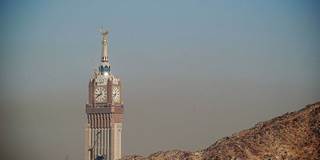Once again, hundreds of people have been trampled to death in Mecca, where the infrastructure cannot cope with the huge number of pilgrims who make the hajj each year. If Muslim countries want to reduce the carnage, they should promote neglected shrines in their own territories.
LOS ANGELES – The recent stampede in Mecca, in which more than a thousand pilgrims making the hajj were trampled to death, is a tragic but powerful reminder of the city’s prominence in the Muslim world. According to theological tradition, every Muslim is required to make a trip to the city once in their lifetime, if they are able to do so.
In practice, however, it is only in recent times that making a pilgrimage to Mecca has come to play such an important role in Islam. The city has always had symbolic significance, but its importance to millions of Muslims worldwide is largely a modern phenomenon, one that has grown in recent decades as Saudi officials and fundamentalist Wahhabi clerics promoted religious tourism as a means of spreading their influence.
For most of Islamic history, the overwhelmingly majority of Muslims did not travel to Mecca. Instead, they made local pilgrimages to the major shrines that still garland the Muslim world. Some are to Koranic prophets even older than Muhammad; others are to Shia imams or Sufi saints; and still others are to hallowed Muslim women. The name of one holy place, the necropolis of Makli in Pakistan, hints at its medieval ambition to become an alternative destination for pilgrims: Makli means the “little Mecca.”

LOS ANGELES – The recent stampede in Mecca, in which more than a thousand pilgrims making the hajj were trampled to death, is a tragic but powerful reminder of the city’s prominence in the Muslim world. According to theological tradition, every Muslim is required to make a trip to the city once in their lifetime, if they are able to do so.
In practice, however, it is only in recent times that making a pilgrimage to Mecca has come to play such an important role in Islam. The city has always had symbolic significance, but its importance to millions of Muslims worldwide is largely a modern phenomenon, one that has grown in recent decades as Saudi officials and fundamentalist Wahhabi clerics promoted religious tourism as a means of spreading their influence.
For most of Islamic history, the overwhelmingly majority of Muslims did not travel to Mecca. Instead, they made local pilgrimages to the major shrines that still garland the Muslim world. Some are to Koranic prophets even older than Muhammad; others are to Shia imams or Sufi saints; and still others are to hallowed Muslim women. The name of one holy place, the necropolis of Makli in Pakistan, hints at its medieval ambition to become an alternative destination for pilgrims: Makli means the “little Mecca.”